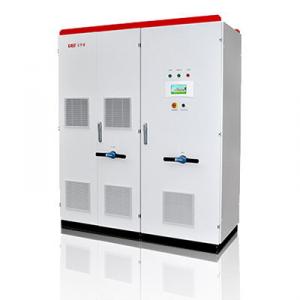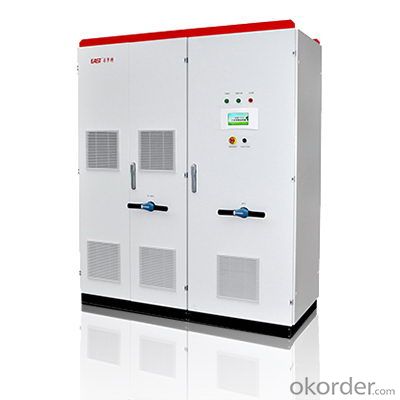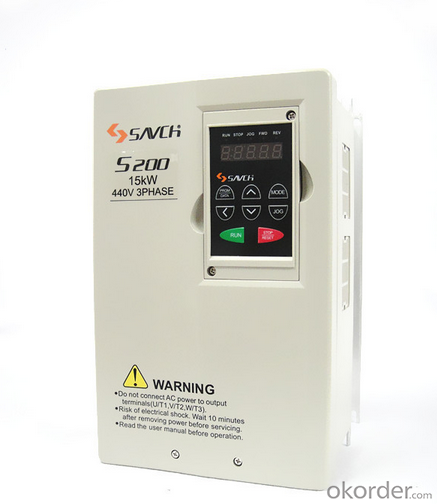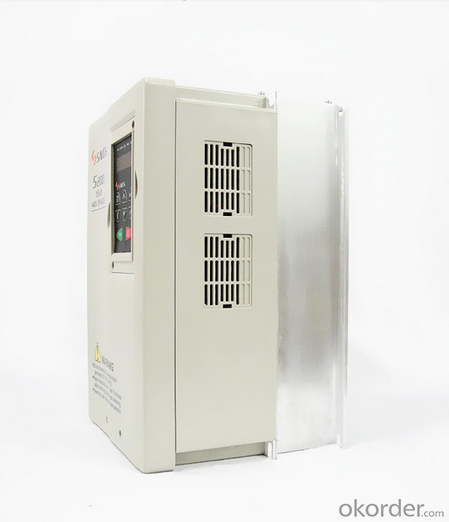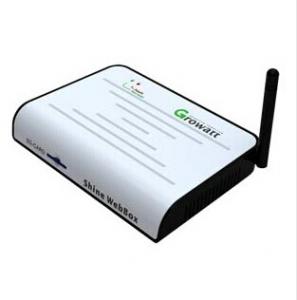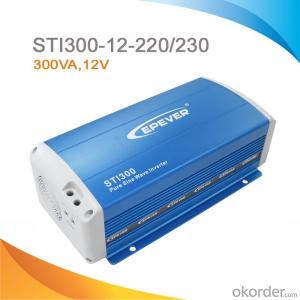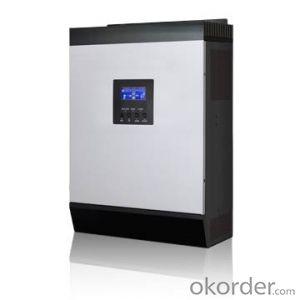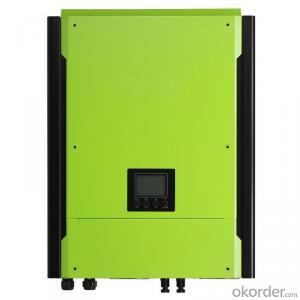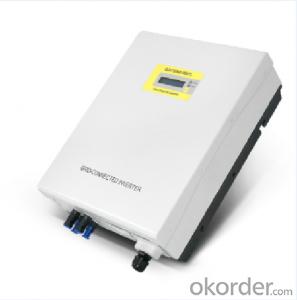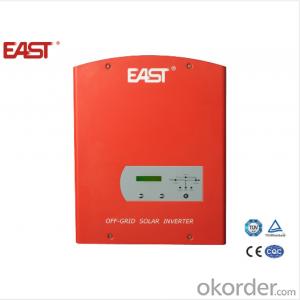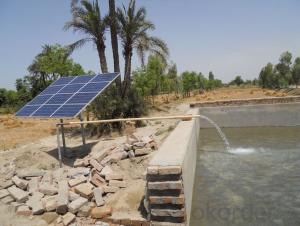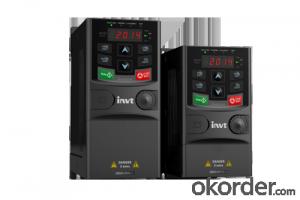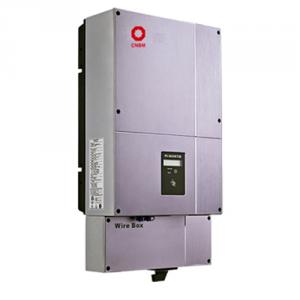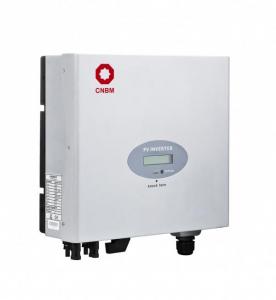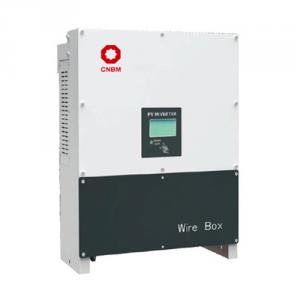Ebay Solar Inverter - Central Inverter with External Transformer, High Power Density Design for Smaller Size
- Loading Port:
- China main port
- Payment Terms:
- TT or LC
- Min Order Qty:
- 10 carton
- Supply Capability:
- 20000 carton/month
OKorder Service Pledge
OKorder Financial Service
You Might Also Like
EA500KTS/M / EA630KTM/X
The central inverter with external transformer adopts high power density design to be smaller size and optical fiber isolation technology to have strong anti-jamming capability, and also integrates DC distribution cabinet function to be more suitable for big power plant; and. It offers different output voltage options
● Low-voltage and zero-voltage ride through to cope with various grid conditions
● Nighttime SVG function, ready for power compensation full time
● Adjustable active power, power factor adjustment from 0.9 overexcited to 0.9 underexcited
● Max. Efficiency at 98.7% (without transformer)
● Advanced MPPT algorithm
● Anti-islanding
● Wide DC input voltage, easy to make the combination of PV array
● CQC certificates (pass CQC33-461239-2013ma test), TÜV certificates, CE certificates
Specification / Type | EA500KTS | EA500KTM | EA630KTM | EA630KTX |
Input (DC) | ||||
Max DC Voltage | 1000Vdc | 1000Vdc | 1000Vdc | 1000Vdc |
Full-load MPPT Voltage Range | 450~820Vdc | 500~850Vdc | 500~850Vdc | 500~850Vdc |
Max DC Power | 550KWp | 550KWp | 630KWp | 630KWp |
Max DC Current | 1200A | 1100A | 1260A | 1200A |
Number of DC Inputs | 16 | 16 | 16 | 16 |
Output (AC) | ||||
Nominal AC Power | 500KW | 500KW | 630KW | 630KW |
Nominal AC Voltage | 270Vac | 315Vac | 315Vac | 400Vac |
AC Voltage Range | 210~310Vac | 245~362Vac | 245~362Vac | 312~460Vac |
Nominal Frequency | 50Hz/60Hz | |||
Frequency Tolerance Range | 47-51.5Hz/57-61.5Hz | |||
Distortion (THD%) | <3%(at nominal power) | |||
Power Factor (Cos phi) | 0.9(leading)~0.9(lagging) | |||
System Parameters | ||||
Max Efficiency | 98.7% | |||
Euro Efficiency | 98.5% | |||
Protection Degree | IP20 (indoor) | |||
Night Consumption | <100W | |||
Operation Temperature Range | -25℃~+55℃ | |||
Cooling | forced-air cooling | |||
Relative Humidity | 0-95%, no condensation | |||
Max Working Altitude | 2000m (derating above 3000m) | |||
Display and Communication | ||||
Display | LCD | |||
Standard Communication | RS485 | |||
Optional Communication | Ethernet /USB | |||
Structure Parameters | ||||
Dimensions(W×D×H) | 1800×800×2200mm | |||
Weight | 1500kg | |||
· Q. What is an UPS and What it is for ?
An uninterruptible power supply (UPS) is a device that allows your computer or telephone switch or critical equipement to keep running for at least a short time or longer time when the primary power source is lost. It also provides protection from power surges, spikes, brownouts, interference and other unwanted problems on the supported equipment.
· Q. How long the UPS to run when power goes?
This can take 3 paths.
1.You can pick a UPS that is rated for pretty much the full VA you need so it will be running at 100% of capability and will thus last 'n' minutes.
2.You can pick a UPS that is rated at a much higher VA value than you really need so, for example, is running at 50% of capability and will thus last for longer than the UPS from option 1.
3.You can use extra external battery packs to run for longer. If charging capability allows, the more and the bigger batteries you take with, the longer time UPS runs.
or using a generator after about 6 hours, it will be more cost-effective, with a short runtime UPS to bridge the generator start-up gap.
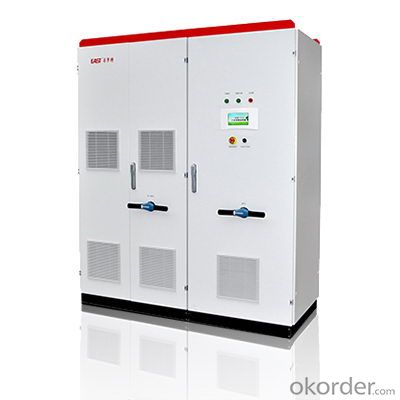

- Q: Can a solar inverter be used with a solar-powered lighting system?
- Yes, a solar inverter can be used with a solar-powered lighting system. A solar inverter is responsible for converting the direct current (DC) energy generated by the solar panels into usable alternating current (AC) electricity. This AC electricity can then be utilized by the lighting system for illumination.
- Q: Can a solar inverter be used in areas with high temperature fluctuations?
- Yes, a solar inverter can generally be used in areas with high temperature fluctuations. Solar inverters are designed to operate in a wide range of temperature conditions, typically between -20°C to 50°C (-4°F to 122°F), depending on the specific model. They are built with temperature protection mechanisms to ensure their functionality and durability even in extreme temperature variations. However, it is important to note that prolonged exposure to extreme temperatures at the upper or lower limits of their operating range can affect the performance and lifespan of the inverter. Therefore, proper installation and regular maintenance are crucial to ensure optimal performance in areas with high temperature fluctuations.
- Q: Can a solar inverter convert DC power to AC power?
- Yes, a solar inverter can convert DC power generated by solar panels into AC power suitable for household or grid use.
- Q: What is the maximum AC voltage that a solar inverter can provide?
- The maximum AC voltage that a solar inverter can provide depends on the specifications of the specific inverter model. However, for most common residential and commercial solar inverters, the maximum AC voltage typically ranges between 208 and 240 volts.
- Q: How does a solar inverter handle variations in solar panel degradation over time?
- A solar inverter handles variations in solar panel degradation over time by continuously monitoring the performance of the solar panels. It adjusts the power output and voltage levels accordingly to optimize the energy conversion process. This adaptive capability allows the inverter to compensate for any decrease in efficiency caused by degradation, ensuring maximum power generation from the solar panels throughout their lifespan.
- Q: Can a solar inverter be used with different types of grid connection standards?
- Yes, a solar inverter can be used with different types of grid connection standards. Solar inverters are designed to convert the direct current (DC) generated by solar panels into alternating current (AC) that can be fed into the electrical grid. They are manufactured to comply with various grid connection standards and regulations, allowing them to be compatible with different types of grids worldwide. This flexibility enables solar inverters to be used in a wide range of countries and regions with varying grid connection requirements.
- Q: What is the maximum operating temperature of a solar inverter?
- The maximum operating temperature of a solar inverter typically ranges from 40 to 50 degrees Celsius, although some models can handle temperatures up to 60 degrees Celsius.
- Q: Can a solar inverter be used in systems with different module types?
- Yes, a solar inverter can be used in systems with different module types. Solar inverters are designed to convert the direct current (DC) generated by solar panels into alternating current (AC) that can be used to power electrical devices. They are compatible with various module types, such as monocrystalline, polycrystalline, and thin-film solar panels, allowing them to be used in diverse solar energy systems.
- Q: What is the difference between a grid-connected inverter and an off-grid inverter? What are the advantages of a hybrid inverter?
- Grid-connected inverter does not need energy storage, but the energy can not be controlled, how much light to send online to the number of online, simply do not want people to the grid does not like.
- Q: What is the difference between a string inverter and a microinverter?
- The main difference between a string inverter and a microinverter lies in the way they convert direct current (DC) from solar panels to alternating current (AC) for use in homes or businesses. A string inverter is a centralized device that connects multiple solar panels in a series or "string" configuration. It converts the combined DC power from the entire string into AC power. This means that if one panel in the string underperforms or is shaded, it can affect the overall performance of the entire string. On the other hand, a microinverter is a small inverter that is attached to each individual solar panel. It converts the DC power from each panel into AC power independently. This allows each panel to perform optimally, even if others in the system are shaded or experiencing issues. In summary, while a string inverter handles the conversion of power from multiple panels as a whole, a microinverter ensures each panel operates at its maximum potential independently.
Send your message to us
Ebay Solar Inverter - Central Inverter with External Transformer, High Power Density Design for Smaller Size
- Loading Port:
- China main port
- Payment Terms:
- TT or LC
- Min Order Qty:
- 10 carton
- Supply Capability:
- 20000 carton/month
OKorder Service Pledge
OKorder Financial Service
Similar products
Hot products
Hot Searches
Related keywords
